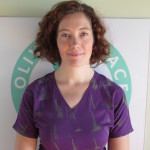The teenage years: The mere phrase can bring on anxiety for parents. The image of a moody, rebellious, angst-ridden teen is common on television and in movies. Luckily, this stereotype isn’t representative of how most teens actually think and behave. But even though the high school years aren’t always as dramatic as pop culture might promise, they can certainly be a rollercoaster as teens seek independence and grow into adulthood.
Teens can seem impulsive, rebellious, and irritable. You might ask yourself: Is he just being a teenager, or is this something I need to be concerned about? While professionals at your teen’s high school likely had the benefit of studying adolescent development in their training, it can be hard for parents to determine what behaviors are expected at this age and what behaviors might be “red flags” of a problem with behavior, attention, or learning.
What to expect from teenagers largely depends on their age—teens undergo tremendous growth and change from the ages of 13–19. Some of the feelings and behaviors common for younger and older suggested by the American Academy of Child & Adolescent Psychiatry include:
Middle School and Early High School Years (Approximately Ages 13–15)
- Struggle with a sense of identity
- Feeling awkward or strange about one’s self and one’s body
- Moodiness
- Interests and clothing style dictated by peer group
- Improved ability to use speech to express self
- Less overt attention shown to parents (occasional rudeness is common)
- Complaints that parents interfere with independence
- Mostly interested in the present, with limited thoughts of the future
- Rule and limit testing
- Increased capacity for abstract thought
Late High School Years and Beyond (Approximately Ages 16–19)
- Increased independent functioning and self-reliance
- Firmer, more cohesive sense of identity
- Ability to think ideas through
- More emotional stability (in comparison to early teen years)
- Conflict with parents begins to decrease (in comparison to early teen years)
- Increased interest in future plans and greater capacity for goal-setting
Remember, not all teenagers develop at the same pace or in the same ways. Variations in the course of development are to be expected! However, unevenness or lags in the mastery of skills or behaviors should not be ignored.
When to Be Concerned
You may want to seek help if your teenager:
- Has difficulty sustaining attention in academic or work tasks and activities
- Does not follow through on instructions and fails to finish schoolwork, chores or other tasks
- Does not pick up on other people’s moods/feelings (e.g., may say the wrong thing at the wrong time)
- Does not detect or respond appropriately to teasing
- Has difficulty “joining in” and maintaining positive social status in a peer group
- Has trouble “getting to the point” (e.g., gets bogged down in details in conversation)
- Has difficulty dealing with group pressure, embarassment and unexpected challenges
- Has trouble setting realistic social goals
- Has trouble evaluating personal social strengths and challenges
In addition, you should be alert for the following behavioral “red flags” which can indicate trouble for teens:
- Extreme mood swings, irritability or a persistently depressed mood
- Loss of self-esteem
- Abandonment or loss of interest in activities
- Major changes in eating or sleeping patterns (e.g., sleeping excessively, eating too little)
- Unexpected and dramatic decline in academic performance
- Personality shifts and changes, such as aggressiveness and excess anger that are out of character
If you’re worried about any aspect of your teenager’s behavior or development, don’t wait to discuss your concerns with your teen’s pediatrician or family doctor, teachers and other school-based professionals, and if necessary, a specialist (such as a psychologist).
This article was written by Kaleigh Dumbach-Fusco, Program Associate at the US National Center for Learning Disabilities (NCLD). It was originally published on the NCLD web site.











